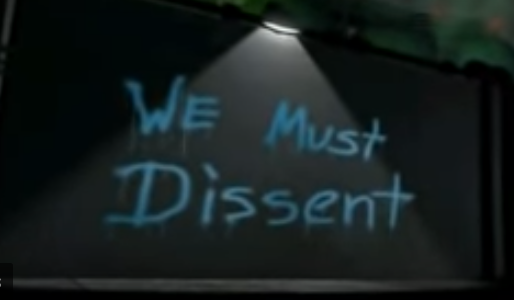The Red-Blue Identity Crisis
This will probably be my last political post for a while. I’ve been hashing out the Red-Blue partisan divide for many posts now since the last election cycle, and wanted to leave a final thought. With the attack on the U.S. Capitol nearly three months behind us, it feels to me like things are settling down. The partisan divide is still there, no doubt, but it seems the conflict has retreated to the shadows. I thought there might be further escalation following the January 6 riot, but now I’m not seeing it. This could just be because of my personal social media bubble, of course.
My last thought on this is that, if partisanship has hardened us to the point that the two political parties can’t possible work together, then politics truly has left the realm of policy debate and become entirely about group identity. This is not unprecedented and it could simply be part and parcel of life in a Crisis Era. So what our political conflict comes down to is a choice of identity for the United States of America. Are we a conservative, “traditional American” society, dominated by whites and Christians (the red zone)? Or are we a progressive, diverse society, accepting of all races, creeds, and orientations (the blue zone)?
Ask yourself: doesn’t this surely describe the choice faced in recent elections? What substantial policy differences have really been on the table, that are not framed in terms of these values differences?
And couldn’t other Crisis Era conflicts be described as identity crises? In the 1860s, Americans faced the choice of defining themselves as primarily agriculturalists dependent on slave labor, or as industrialist capitalists and abolitionists. In the 1770s, Americans faced the choice of defining themselves as loyalists to the King, or as patriots of an independent nation. The winners of the great conflicts of those eras determined the identity which prevailed.
So what we’re experiencing is an identity crisis, as we try to figure out as a society if we are going to let the red zone values regimes prevail, or the blue zone values regime. I see a parallel between our times and England in the Tudor era, which see-sawed between Protestant and Catholic identities under different monarchs. Bloody Mary’s reign was a Catholic interregnum between two Protestant regimes, just as Trump’s was a MAGA interlude between the progressive Presidencies of Obama and Biden.
And just as England emerged from its conflicts as a decidedly Protestant nation, I believe the United States will ultimately affirm itself as a blue zone nation. Why do you think the red zoners complain so much about the “mainstream media?” The blue zone, with its progressive identity, is the mainstream!

In the end, the Red State, already exiled from social media and the butt of joking memes, will be consigned to an “alt-” existence on the fringes of mainstream society. All that their politicians can do now is do their best to suppress the vote. But in the long run, they cannot prevail. They we will be left as troublemakers, and dissenters from the mainstream view.
Which isn’t to say that they will be entirely in the wrong or that the mainstream view will be ideal for society. That’s just the way we are headed right now, as far as I can tell. Of course, some major event could prove me wrong. But barring that, I don’t think I have much more blogging to do on this subject.
